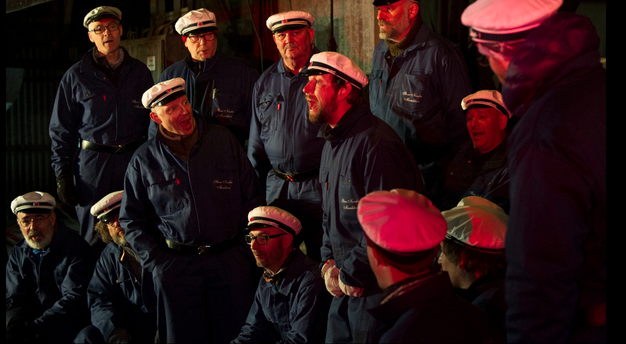
In Longyearbyen, Svalbard, a choir united by coal takes to the stage in an abandoned building – but the future for local coal mining looks uncertain. This is the first installment of “Meet the North,” a series that ventures into the lives of some of the 4 million people who call the Arctic home.
It was below freezing inside the derelict mining building that looked down over Longyearbyen, Svalbard. Coal dust powdered the wooden floor. The corrugated metal walls enclosed a control room, ceiling tracks and tangles of steel. This building used to collect cable cars full of coal and send them down to the harbor. It was abandoned long ago, but for one night in June – this night – it becomes a concert hall jammed with locals dressed in down jackets and brightly coloured winter hats. Coal – the world’s most maligned fossil fuel and the foundation of this community – was about to take center stage.
The crowd cheered and whistled as 16 Norwegian men filed into the room. They wore matching white caps and navy blue coveralls with “Store Norske Mandskor” (Great Northern Men’s Choir) silkscreened on their breast pockets. Each man boasted a custom belt buckle showing a hammer and pick – the traditional tools of miners. But the outfits belied their true occupations; this group included the world’s northernmost architect and the town pastor, as well as the leaders of all the political parties in town.
The conductor wore white gloves and a purple down jacket beneath his costume. With a flash of his hands, the men breathed in and opened their mouths. Their voices poured over the crowd and across the bright fjord.
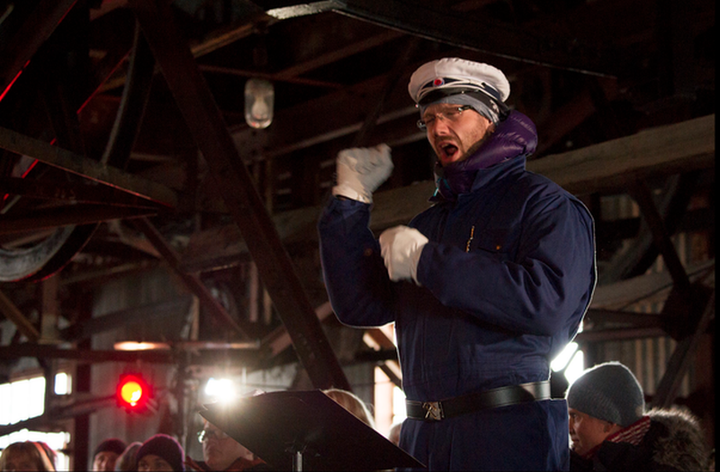
Svalbard is an archipelago in the Arctic Ocean, midway between Europe and the North Pole. Almost 2,200 of Svalbard’s 2,700 inhabitants live in Longyearbyen. They’re mostly Norwegians, as Norway has sovereignty over the archipelago, but the town was named after an American, John Munro Longyear, who started coal mining in 1906. The Store Norske Spitsbergen Kulkompani (the Great Northern Spitsbergen Coal Company) bought Longyear’s enterprise 100 years ago, and it’s still the only mining company in town.
In the 1980s and 1990s, Longyearbyen evolved from a company town, which was expensive to maintain, into a community that also relies on tourism and a university campus. In 2015, the coal company employed almost 500 people on the island of Spitsbergen and said that 40 percent of the population still relied on the mines through direct and indirect jobs.
The company inspired the choir, which has existed on and off for a century. Elisabeth Larsen, who sells Store Norske’s coal to international buyers, tipped me off about the show.
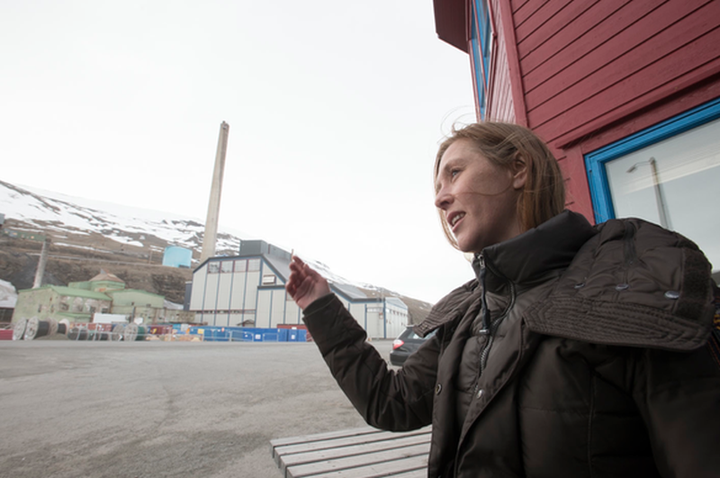
I met Larsen on her coffee break outside head office, across the street from Norway’s only coalfired power plant. Its fuel comes from Mine 7, 16km (10 miles) from town, that produced 70,000 metric tons of coal in 2015. The largest mines are in Svea, 60km (37 miles) away, where they have extracted between 1 and 2 million metric tons of coal annually for the last few years. Last year, $64 million worth of coal was shipped to Sweden, Denmark, the Netherlands, Germany and the United Kingdom.
“Nobody likes coal,” Larsen said, “but nobody wants to accept the fact that we don’t have anything to replace it with.” At 78ºN, energy security is paramount. Heat is life.
For Longyearbyen, coal is a Catch-22. It might be dirty, but it’s local. It comes from down the street, and if it runs out, the community must rely on diesel shipped a long, long way. Coal built this community, but times are changing. Coal mines are an anomaly in Norway, which is known for its hydropower, and a growing number of townspeople recognise that coal is dirty to burn and expensive to extract.
I expected that differing views about coal and energy would create tension in such a small community, and I asked Larsen how people deal with that.
“Oh, it’s not difficult between people.” she responded.
I hesitated and then replied: “I don’t believe you.”
Larsen laughed. “Go to the concert on Saturday night, and you’ll see what I mean.”
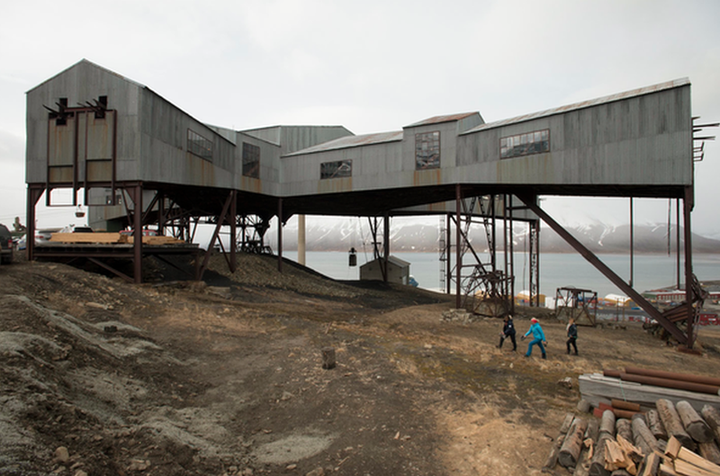
The air in the old building seemed to warm even as the evening grew colder. The music alternated from heartfelt ballads to fun and silliness, and each tune rang with precise harmony. Whether they were singing about the tundra or covering “Sixteen Tons” by Kentucky’s Merle Travis, these men had joy on their faces – and it was contagious.
They sang and even danced. They led us in half-time stretches. Their voices resonated with the steel of that stark building. And then we went to the pub.
Over beers and pizza and between spontaneous bursts of song, I got to know the men a little better: the heads of business development and real estate for the mine, a schoolteacher and the head of the trade union. Also, political leaders from the Labor Party, the Liberal Democrats, the Conservative Party and – the newest act in town – Miljopartiet De Gronne, the Green Party.
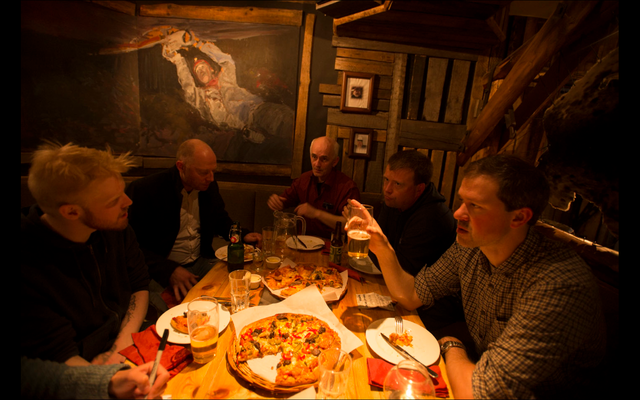
I recognized the Green Party leader, Espen Rotevatn, as the conductor in white gloves. Part of his political mission is to end coal mining on Svalbard forever; yet in his spare time he dons a miner’s outfit and leads his group to harmony.
Sveinung Thesen, the concert MC and an employee of the mining company, explained it best: "Your political beliefs and what you culturally relate to are two different things. I perfectly understand a person can be skeptical toward mining but still be proud of the heritage we have here in Longyearbyen."
Everyone around the table understands that the mines still greatly affect their community. Aleksander Askeland, who works in business development at Store Norske, explained that if the coal mines closed 300–400 jobs would quickly disappear. “This is bad for everybody," he said. "You can’t turn this off in a day.”
Even Rotevatn voted in support of a $70 million loan from the Norwegian government to keep the mine going in the short term. “It seems wrong to me that we do this [coal mining] in the Arctic, in a very special environment ... but a vote against the loan was a vote against Longyearbyen,” he said. Keeping the mine going for now buys time to build a longer-term solution, which may or may not include coal.
Almost a year later, big changes have come. For 2017, Store Norske has decided to double production at Mine 7 and stop production in Svea for three years with the hope that coal prices will rebound. If they do not, Store Norske will close those mines permanently. For now, the company will cut the 300–400 jobs that Aleksund referenced, and by next year the company will have only 95 employees. Elisabeth will still be one of them.
In the meantime, energy diversification is on the table: for example, a test project for solar energy is running in Svea. On the political front, Rotevatn and one other member became Svalbard’s first representatives of the Green Party last fall.
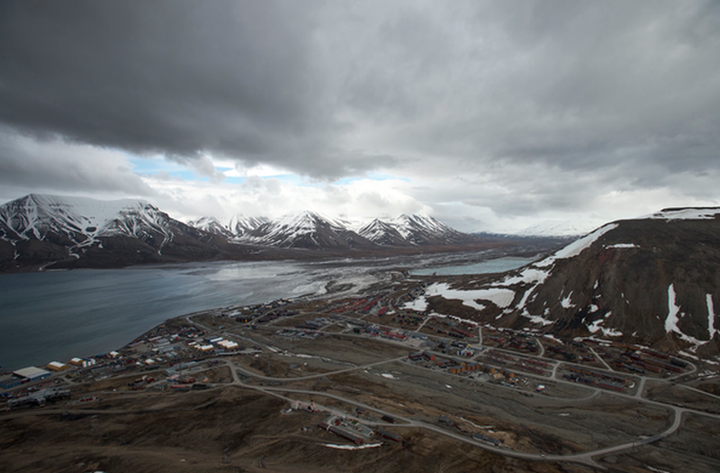
Choral singing is all about a common purpose. In this case, a love of Longyearbyen that includes its past and future. Coal may be leaving center stage, but nobody in the choir underestimates its importance – regardless of their politics.
Politics are unavoidable in a small town, and the Store Norske Mandskor knows when they must be sidelined for the good of community. When I asked Rotevatn what happens when politics meet music, he simply said, “Nothing. We sing, and we drink beer.”
It’s a simple formula, but it seems to be working. They will need to stand strong as coal heads backstage.
Jennifer Kingsley is the founder and project lead for Meet the North , which is sponsored by Lindblad Expeditions-National Geographic. Follow her northern adventures on Instagram.
This article originally appeared on Arctic Deeply. For weekly updates about Arctic geopolitics, economy, and ecology, you can sign up to the Arctic Deeply email list.